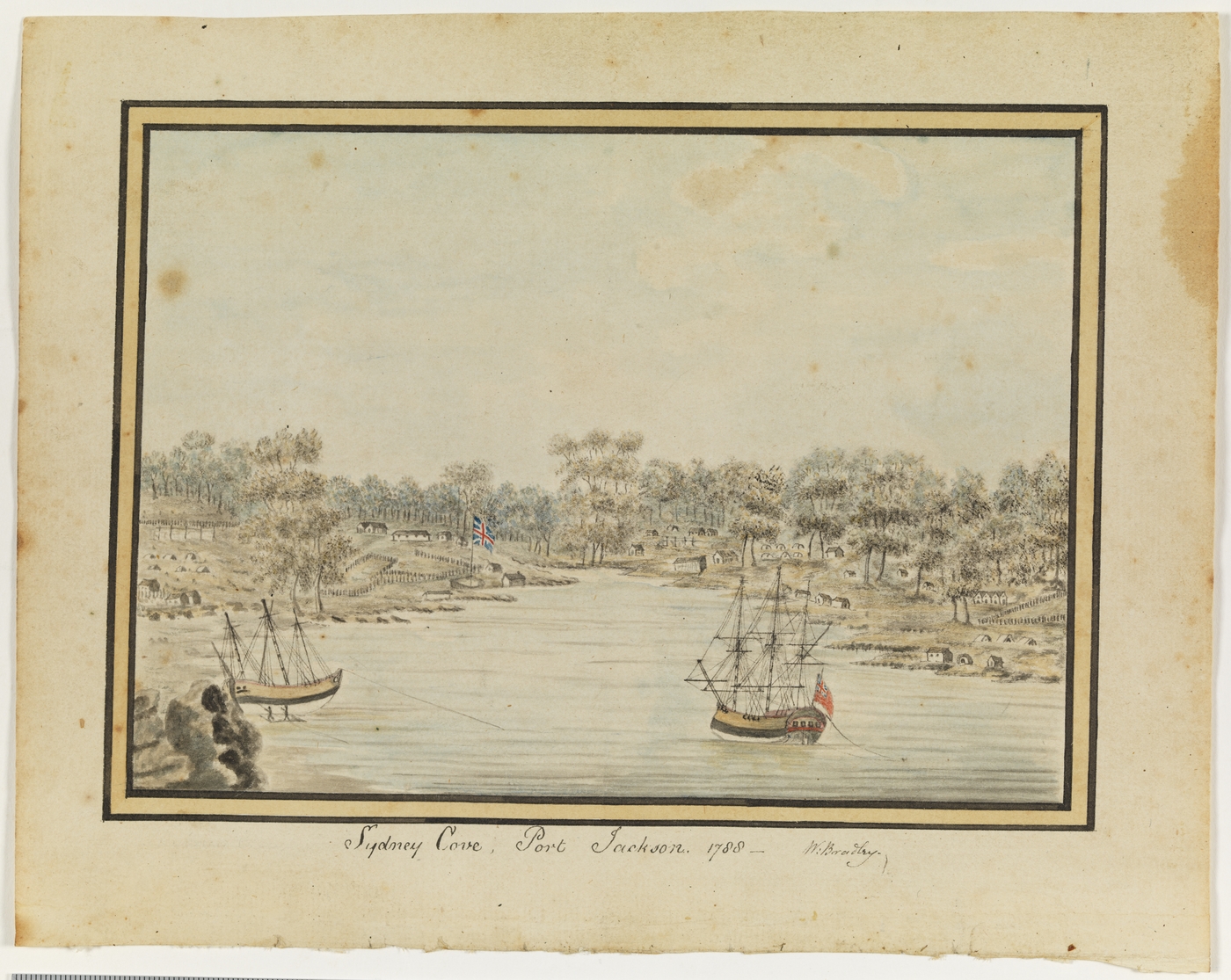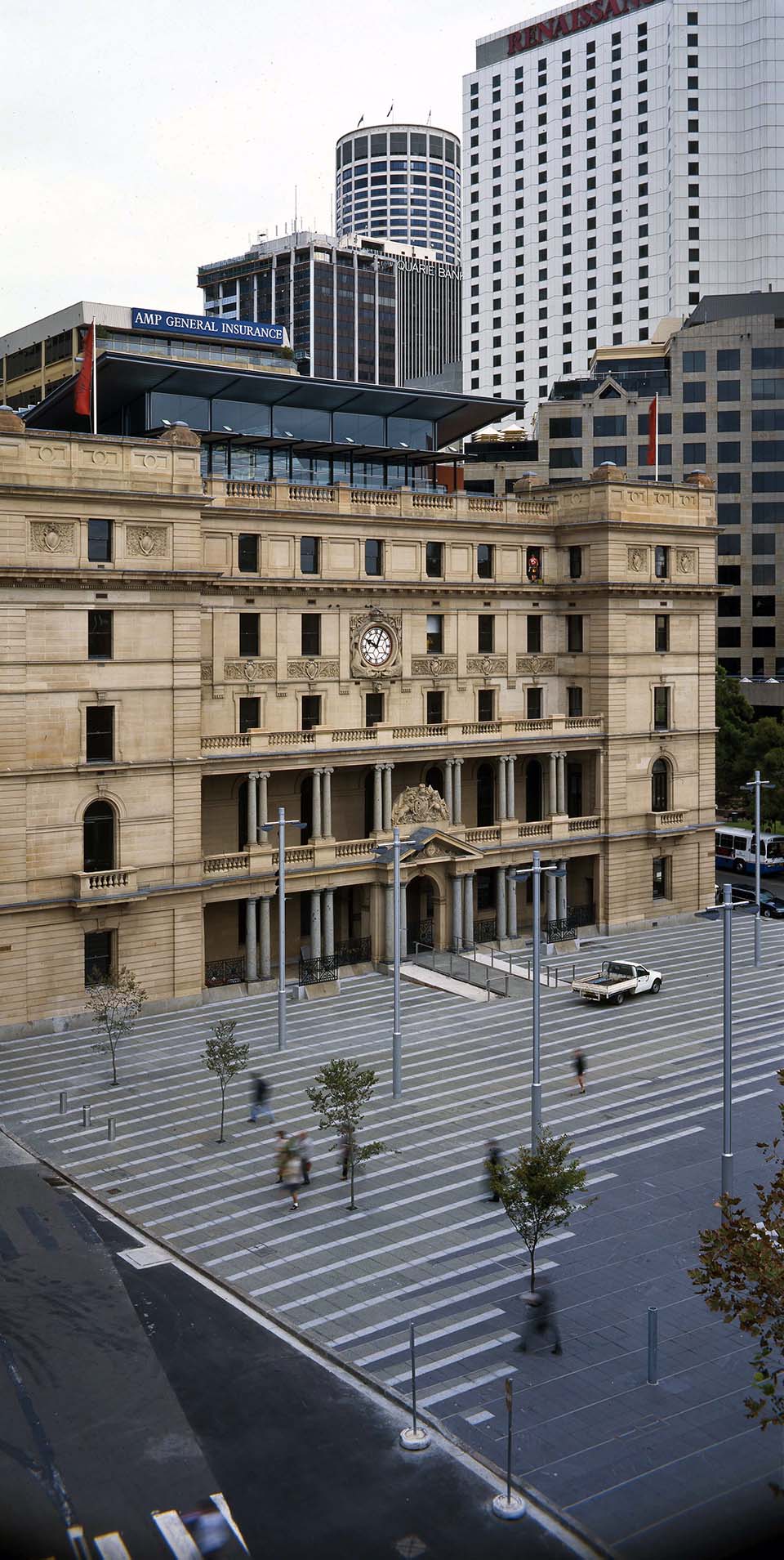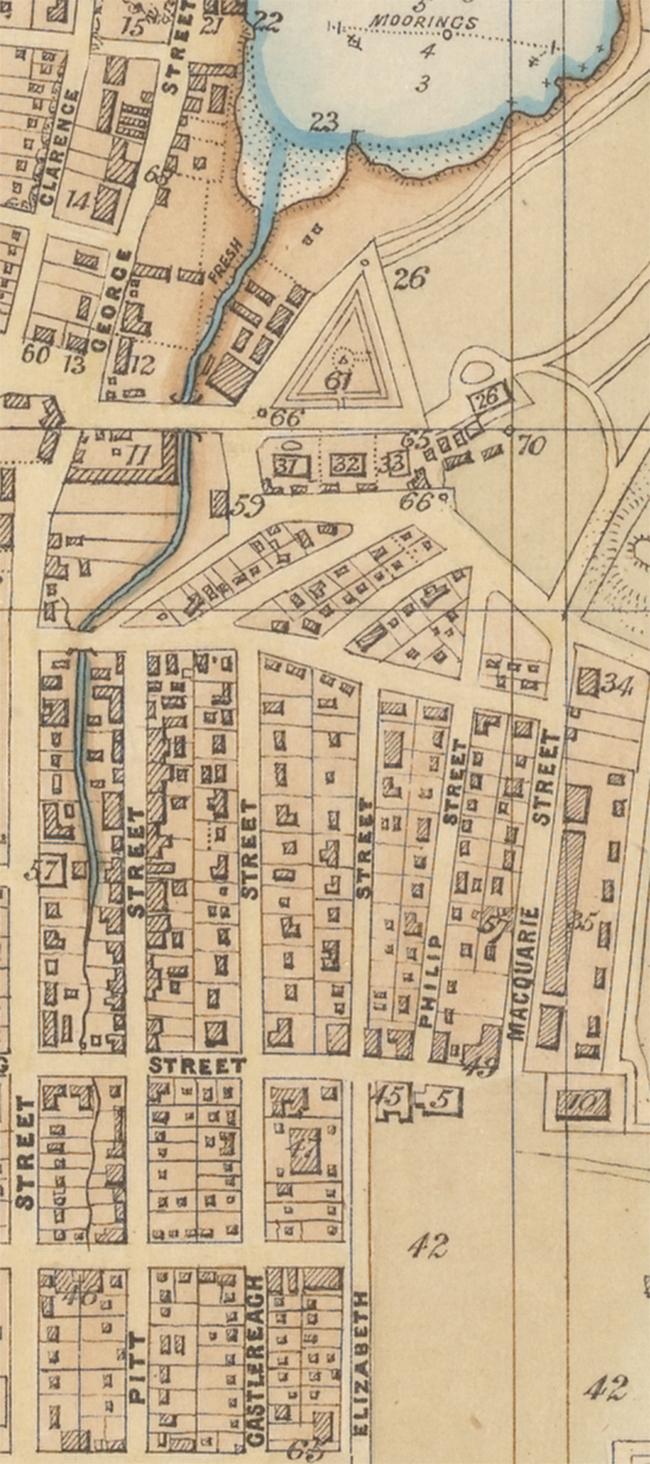The Dictionary of Sydney was archived in 2021.
The Tank Stream
Citation
Persistent URL for this entry
To cite this entry in text
To cite this entry in a Wikipedia footnote citation
To cite this entry as a Wikipedia External link
The Tank Stream
[media]Named for the 'tanks' or reservoirs cut into its sides to save water, the Tank Stream, which wound its way through the colony before emptying into Sydney Cove, was Sydney's original water supply. [1] Its shaping and creation reflects the experience of British officers who had been colonists in India.
The original stream
[media]If you sit on the terrace of the restaurant in the beautiful old Customs House at Circular Quay, you can look down at the flagstones and then consider digging. After a few metres, directly underneath the terrace, you would find the sandy beach of the original Sydney Cove shoreline. The original shoreline is massively built-up today to accommodate the ferry and ocean liner traffic, but the Tank Stream, which flowed across the beach here, was really the reason Sydney was settled at this point.
The First Fleet had arrived in Botany Bay to find fresh water was scarce, so its officers were delighted when they rounded Bennelong Point and found a cove deep enough to accommodate ships of some size and with a stream flowing into the western corner of the cove.
[media]The stream, as they discovered, had its source up the hill in what is now Hyde Park, and it was fed by springs lower down in the area of what is now Spring and King Streets, dropping thirty metres, through a series of small waterfalls, on its picturesque tree-lined path. As the colonisers started building their camp, the stream split the city socially as well as geographically, in a manner that foreshadows the social divides between today's eastern and western suburbs - officers and governors to the east, soldiers and convicts to the west.
Cutting the tanks
By 1792 the colony was in drought, and the water quality had declined. Someone had an idea, and historian Heather Goodall believes it was a British Officer who had spent the last 20 years in India. [2] The sandstone was excavated to create three storage tanks, one adjoining Pitt and Spring Streets, two more on Bond Street. Each tank held 20,000 litres of freshwater. [3]
This was not British knowledge or technology but rather Indian vernacular technology. The British officer who conceived of the tanks and supervised their digging would have learnt about tank technologies in India, where such technologies are widespread in a climate alternating between monsoon and drought, as with Sydney.
[media]The English do not even use the word 'tank' – 'pond' is more common usage. The Oxford English Dictionary specifies that 'tank' is most likely derived from the Sanskrit via Gujarati, though one theory traces it to a Portuguese word used in India.
In India, A pool or lake, or an artificial reservoir or cistern, used for purposes of irrigation, and as a storage-place for drinking-water,' with the earliest reference c1616.
The very next entry states 'In Australia, an artificial reservoir designed to hold water for livestock'. [4]
From water source to drain
[media]By 1826 the Tank Stream had become an open sewer, and it was abandoned. [5] It is now no longer visible, but is a storm water drain carrying water under the city to the Harbour. Yet it was the water-source that founded a city and a nation. It links contemporary Sydney to its origin, but also to another colony, India, with a word that carries with it meanings that diverge from the England that Australia thought was its cultural homeland, and refers to an inventive technology for adapting to southern climates. [6]
References
Stephen Muecke. 'Speculating with History'. Wasafiri. 26 no 2 (2011): 37-40
NSW Office of Environment and Heritage. 'Tank Stream'. http://www.environment.nsw.gov.au/heritageapp/ViewHeritageItemDetails.aspx?ID=4573709
Sydney Catchment Authority. 'Take a journey in time – water supply 1778 to now'. http://www.sca.nsw.gov.au/water/heritage/timeline
Notes
[1] Sydney Catchment Authority, 'Take a journey in time – water supply 1778 to now', http://www.sca.nsw.gov.au/water/heritage/timeline, viewed 6 May 2015
[2] Historian Heather Goodall, personal communication
[3] NSW Office of Environment and Heritage, 'Tank Stream', http://www.environment.nsw.gov.au/heritageapp/ViewHeritageItemDetails.aspx?ID=4573709, viewed 6 May 2015
[4] Oxford English Dictionary, 'tank, n1', http://www.oed.com/view/Entry/197525?rskey=e7Yz8A&result=1#eid, viewed 6 May 2015
[5] Sydney Catchment Authority, 'Take a journey in time – water supply 1778 to now', http://www.sca.nsw.gov.au/water/heritage/timeline, viewed 6 May 2015
[6] Stephen Muecke, 'Speculating with History', Wasafiri, 26 no 2 (2011): 37-40
.







